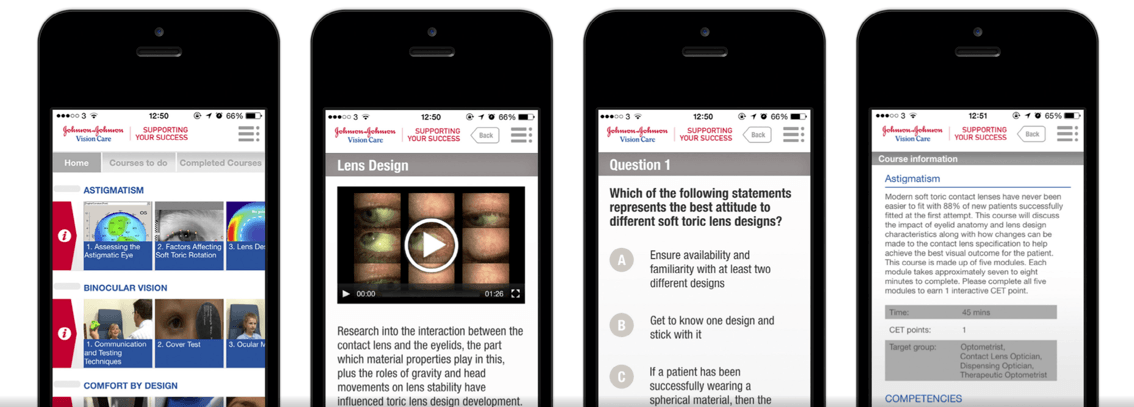Standout From Your Competitors: 3 Ways To Differentiate Your Online Training
A better online training product will help you sell more courses. Let’s take a look at 3 ways you can differentiate your online training.
1. Use branching scenarios and menus to make training easy to navigate and consume.
You need to make it as easy as possible for your learners to consume your online training. By using simple branching scenarios and simple navigation menus, you can ensure that learners focus on the learning content and not on how to use the product. To help you get started, here are some of my favorite methods of guiding learners through training content:
- Ask a question.
Provide several answers, each of which branches off to a different screen of content. - Use clickable images.
Let the learner select the topic he or she wants to drill down into. - Provide an intriguing point of conflict.
Invite the learner to “see what happens next”.
These navigational mechanisms draw the learner into the training; instead of using a boring “Next” button, you can engage learners with on-screen content, which personalizes and enhances the learning experience. City Witness’s Medieval Swansea (created with Elucidat) demonstrates good use of branching and navigation. The clickable images and forward and back navigation make it feel like you’re panning around a landscape rather than moving from screen to screen.
Elements like this create a high level of engagement that will give you an edge over competitors that employ a “Click Next to continue” approach.
Elements like this create a high level of engagement that will give you an edge over competitors that employ a “Click Next to continue” approach.
Related: Why branching scenarios are important (4 reasons)
2. Use gamification to challenge learners.
Gamification is a hot topic right now, but how do you use it to differentiate your online training?
Gamification works because everybody loves games. The feeling of accomplishment, of improving, of beating an opponent and the feedback and rewards that you get are the sorts of things that keep you coming back for more. Instead of just teaching material to learners, challenge them with questions that make them weigh up options and make trade-offs. By giving learners multiple variables, you ensure that they have to consider cause-and-effect relationships and prioritize their efforts.
For example, in this Can you spot the fake smile? (example by Elucidat), learners are challenged to spot a fake smile among genuine smiles.
This works well because it gets learners thinking and engaging with the online training. They aren’t just consuming the material, they’re being challenged!
Authoring tools such as Elucidat make it easy to add simple gamification to online training. You can challenge learners with multiple scenarios, reward learners with badges, and unlock new material when the learner passes sections.
Related: Don’t add gamification until you answer these five questions
3. Use responsive design to create online training that is mobile-ready.
A whopping 91 percent of the US population now owns a smartphone. Are you accommodating the modern, mobile-first learner?
Modern learners love mobile learning because it’s convenient and flexible. It empowers them to take their online training with them and to work on it during their trips away from the office.
To give you an example, one of our clients –Johnson & Johnson Vision Care– works with eye care practitioners who don’t have access to desktops while at work. The only way they can consume training is through their mobile devices. The client used Elucidat’s responsive slider to build and test responsive learning that their practitioners could access from their mobile devices.
By making your online training adaptive to desktop, tablet, and smartphone screen sizes (i.e., responsive), you allow more learners to access the learning in more flexible ways. This gives you a great advantage over competitors who only offer learning for the desktop.
In the next 12 months, how many of your customers will demand mobile-ready training? Don't ignore the trend; start differentiating your online training by using responsive design today.
Related: Why mobile learning is important (4 reasons)
Final Thoughts
Online training providers are not immune to competitive forces. By focusing on making your training easier to consume, more engaging, and mobile friendly, you can create a unique competitive advantage that will help you sell more courses this year and well into the future.
Interested in learning more? Read these articles:




